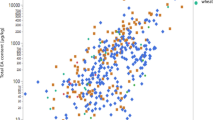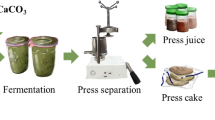Abstract
Hydrothermal treatments are primarily used to increase the digestibility of nutrients and therefore to improve the feeding value of feedstuffs mainly for non-ruminants. Other positive side effects may occur, e.g. a decrease in toxicity of feed contaminated with mycotoxins. To study such effects, 4 batches of rye containing different percentages (0.8, 4.2, 8.3 and 25%) of ergot (Claviceps purpurea) were expanded and ergot alkaloid contents were analysed. After pre-conditioning of each batch by steam exposure for approx. 2 min, at 95 °C and 17% moisture, the material was expanded for approx. 5 sec. at 120 °C, 18% moisture, 40 bar mechanical pressure and 20 kWh/t mechanical energy input. Samples were collected before and after pre-conditioning and after expanding. Ergot alkaloids were analysed by HPLC. Analysis includedErgometrine, Ergotamine, Ergocornine, Ergocryptine, Ergocristine, Ergosine and their respective-inine isomers, the sum of these 12 ergot alkaloids was referred to as the total alkaloid content.
On average, the hydrothermal treatment (pre-conditioning and expanding) caused a decrease of the total ergot alkaloid content of approx. 10%. Except for the batch containing 0.8% ergot, the efficiency of the hydrothermal treatment decreased with increasing ergot concentration in the batches. In general, the hydrothermal treatment changed the proportions of the ergot alkaloid isomers since the percentages of the-inine isomers of the total ergot alkaloid contents were increased with reduced-ine percentages. Whether this alteration is of toxicological relevance should be evaluated in animal experiments.
Similar content being viewed by others
Literatur
Wolff J, Neudecker Ch, Klug Ch, Weber R (1988) Chemische und toxikologische Untersuchungen über Mutterkorn in Mehl und Brot. Z Ernährungswiss 27: 1–22
Scott P M, Lawrence G A (1982) Losses of ergot alkaloids during making of bread and pancakes. J Agric Food Chem 30: 445–450
Wolff J, Ocker H D (1985) Einfluss des Backprozesses auf den Gehalt des Mutterkornalkaloides Ergometrin. Getreide, Mehl und Brot 39: 110–113
Friedman M, Dao L (1990) Effect of autoclaving and conventional and microwave baking on the ergot alkaloide and chlorogenic acid contents of morning glory heavenly blue seeds. J Agric Food Chem 38: 805–808
Klug Ch (1986) Bestimmung von Mutterkornalkaloiden in Lebensmitteln. Max von Pettenkofer-Institut des Bundesgesundheitsamtes, MvP-Hefte 2
Young J C, Chen Z, Marquardt R R (1983) Reduction in alkaloid content of ergot sclerotia by chemical and physical treatment. J Agric Food Chem 31: 413–415
Author information
Authors and Affiliations
Corresponding author
Additional information
Financial support: Wilhelm Schaumann Stiftung
Rights and permissions
About this article
Cite this article
Mainka, S., Dänicke, S., Ueberschär, K.H. et al. Zum Einfluss einer hydrothermischen Behandlung auf den Ergotalkaloidgehalt von mutterkornbelastetem Roggen. Mycotox Res 21, 116–119 (2005). https://doi.org/10.1007/BF02954433
Issue Date:
DOI: https://doi.org/10.1007/BF02954433




